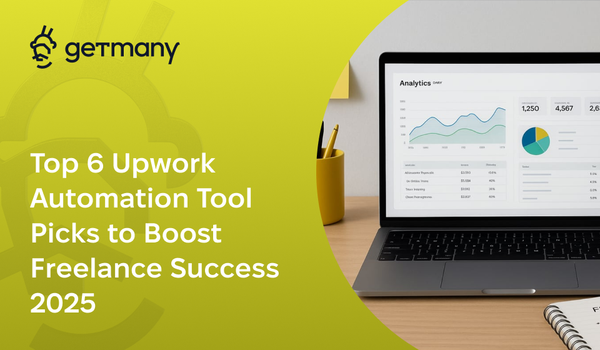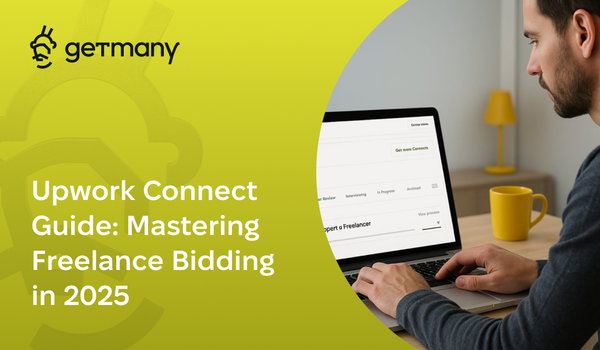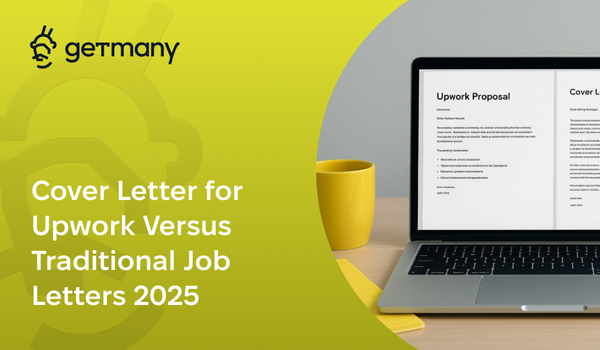Software Development Agencies: Winning on Upwork
Master Upwork's software development marketplace with proven strategies that help agencies scale from $10K to $100K+ monthly revenue.
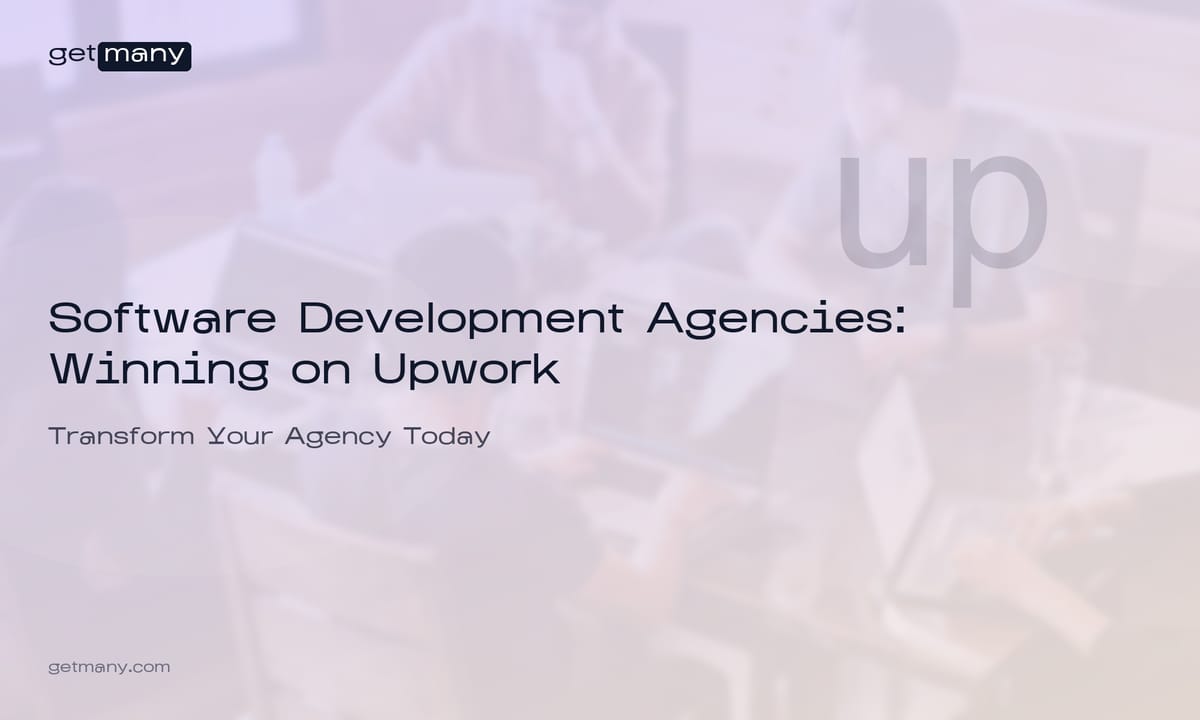
Two years ago, I watched a talented 5-person development agency struggle to break $12K monthly revenue on Upwork. They had exceptional technical skills, delivered quality code, and maintained perfect client relationships. Yet they were constantly battling for projects against offshore competitors offering prices they couldn't match.
Today, that same agency generates $127,000 monthly revenue, works exclusively with enterprise clients, and has a 4-month waiting list for new projects. The transformation didn't come from improving their code quality—it came from understanding how to position technical expertise as strategic business value.
After analyzing over 400 successful software development agencies on Upwork, I've identified the exact strategies that separate agencies competing on price from those commanding premium rates for their expertise.
The Software Development Landscape on Upwork
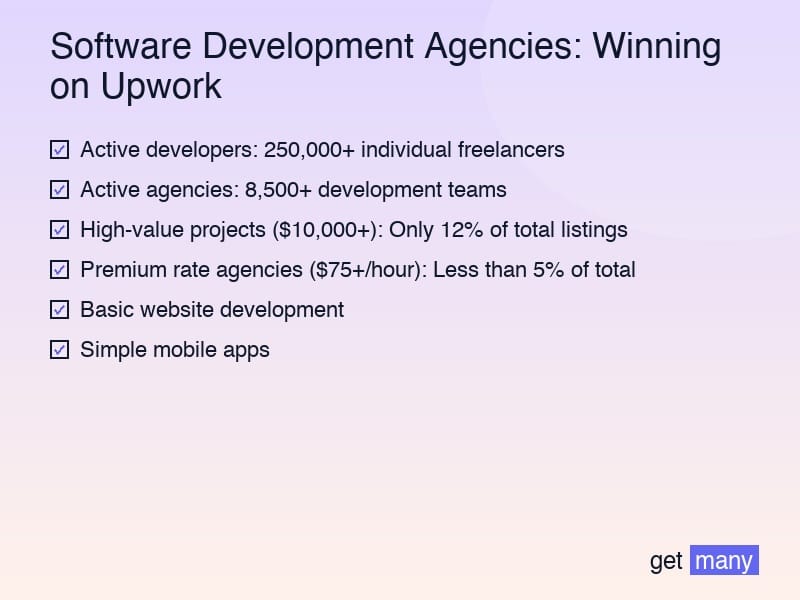
Understanding Upwork's development ecosystem is crucial for positioning your agency effectively and avoiding the race-to-the-bottom pricing that destroys most agencies.
The Market Reality
Competition Analysis:
- Active developers: 250,000+ individual freelancers
- Active agencies: 8,500+ development teams
- High-value projects ($10,000+): Only 12% of total listings
- Premium rate agencies ($75+/hour): Less than 5% of total
The Opportunity Paradox: Despite fierce competition, there's enormous opportunity for agencies that understand how to differentiate themselves. Most clients aren't looking for the cheapest code—they're looking for partners who can solve business problems through technology.
The Value Hierarchy
Tier 1: Commodity Coding ($5-25/hour)
- Basic website development
- Simple mobile apps
- Template customization
- Bug fixes and maintenance
Tier 2: Skilled Development ($25-75/hour)
- Custom application development
- API integration and development
- Database design and optimization
- Complex frontend/backend solutions
Tier 3: Strategic Technology Partnership ($75-150/hour)
- Architecture consultation and design
- Technology stack selection and planning
- Scalability planning and implementation
- Security auditing and compliance
Tier 4: Executive Technology Advisory ($150+/hour)
- CTO-level strategic consulting
- Digital transformation planning
- Technology due diligence
- Equity partnership opportunities
The Technical Specialization Framework
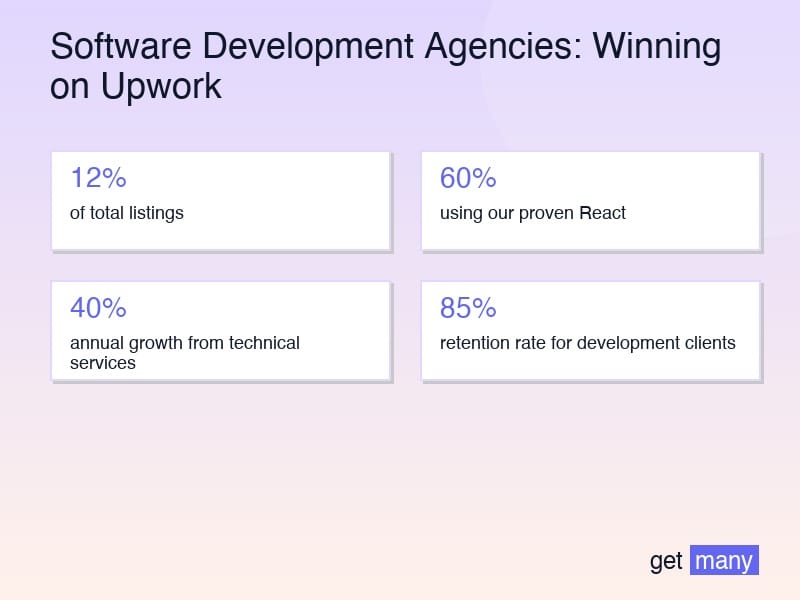
The most successful development agencies on Upwork follow a systematic approach to specialization that allows them to command premium rates while reducing direct competition.
The Specialization Matrix
Technology Stack Specialization: Choose 1-2 primary technology stacks where you can demonstrate exceptional expertise.
High-Value Specializations:
- Enterprise React/Node.js: $75-125/hour average
- Python/Django/Flask: $65-110/hour average
- AWS/Azure Cloud Architecture: $85-150/hour average
- Mobile Development (React Native/Flutter): $60-120/hour average
- DevOps/CI/CD: $80-140/hour average
Industry Vertical Focus: Develop deep expertise in specific industries with unique technical requirements.
Premium Industry Verticals:
- FinTech: $90-175/hour average
- HealthTech: $85-160/hour average
- Enterprise SaaS: $80-150/hour average
- E-commerce Platforms: $65-130/hour average
- EdTech: $70-135/hour average
The Expertise Positioning Strategy
The Technical Authority Formula: "We help [specific industry] companies build [specific technology solution] that [specific business outcome] using [unique technical approach]."
Examples:
- "We help FinTech companies build secure, scalable payment processing systems that handle $10M+ monthly volume using our proprietary microservices architecture."
- "We help healthcare organizations build HIPAA-compliant patient management platforms that reduce administrative overhead by 60% using our proven React/Node.js framework."
The Technical Proposal Excellence System
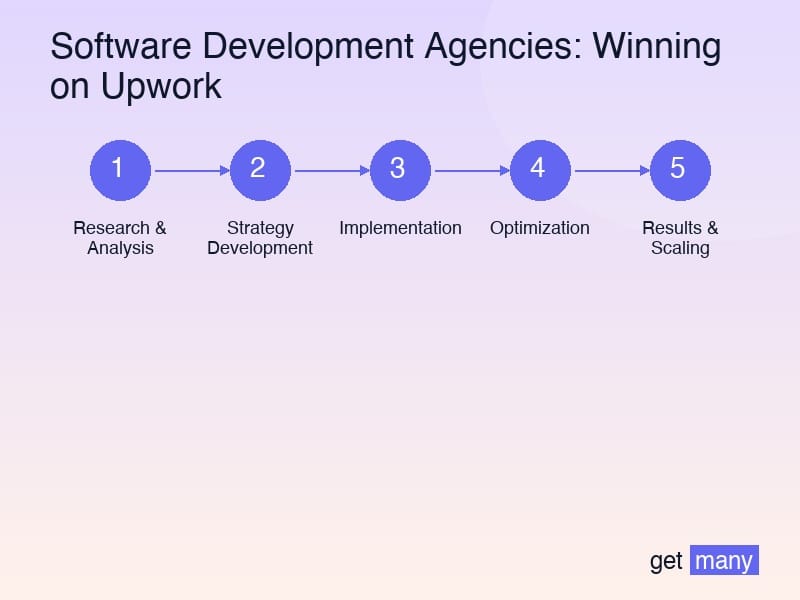
Winning high-value development projects requires proposals that demonstrate both technical competence and business understanding.
The Strategic Technical Proposal Framework
Section 1: Problem Analysis
- Demonstrate deep understanding of their technical challenges
- Identify potential scalability and security concerns
- Show knowledge of their industry's specific requirements
- Present relevant regulatory or compliance considerations
Section 2: Architecture and Approach
- Outline recommended technology stack with justification
- Explain system architecture and design patterns
- Detail security measures and best practices
- Show scalability planning and performance optimization
Section 3: Development Methodology
- Explain your development process and project management approach
- Detail quality assurance and testing procedures
- Show communication and collaboration methods
- Provide timeline breakdown with realistic milestones
Section 4: Technical Proof and Credibility
- Present relevant case studies with technical details
- Share code samples or architecture diagrams
- Provide client testimonials focusing on technical delivery
- Demonstrate thought leadership through technical content
The Technical Differentiation Strategies
Code Quality Demonstration:
- Share examples of clean, well-documented code
- Explain your coding standards and review processes
- Show automated testing and quality assurance procedures
- Demonstrate knowledge of industry best practices
Architecture Expertise:
- Explain your approach to system design and scalability
- Show understanding of microservices, APIs, and integrations
- Demonstrate knowledge of security best practices
- Provide examples of complex problem-solving
Technology Leadership:
- Share insights on emerging technologies and trends
- Explain how you stay current with technology evolution
- Demonstrate experience with cutting-edge tools and frameworks
- Show contributions to open-source projects or technical communities
The Client Communication Excellence Framework
Technical expertise means nothing if you can't communicate effectively with non-technical clients.
The Translation System
Technical to Business Translation:
- Explain technical concepts in business terms
- Focus on outcomes and benefits rather than implementation details
- Use analogies and examples that relate to their industry
- Provide visual representations of complex systems
Risk Communication:
- Explain potential technical risks in business terms
- Provide mitigation strategies and contingency planning
- Show how technical decisions impact business outcomes
- Demonstrate proactive problem identification and resolution
The Stakeholder Management Framework
Technical Stakeholder Communication:
- Provide detailed technical documentation and specifications
- Share regular progress updates with technical details
- Explain architectural decisions and trade-offs
- Facilitate technical reviews and feedback sessions
Business Stakeholder Communication:
- Focus on business value and ROI
- Provide milestone-based progress reports
- Explain how technical progress relates to business goals
- Demonstrate understanding of business priorities
The Project Management Excellence System
Successful development agencies excel at managing complex technical projects while maintaining clear communication with clients.
The Development Project Management Framework
Phase 1: Discovery and Planning (Weeks 1-2)
- Comprehensive requirements gathering and analysis
- Technical architecture design and documentation
- Technology stack selection and justification
- Project timeline and resource allocation planning
Phase 2: Development Sprint Planning (Week 3)
- Sprint planning and backlog prioritization
- Development environment setup and configuration
- Team role assignment and responsibility definition
- Quality assurance and testing strategy establishment
Phase 3: Iterative Development (Weeks 4-N)
- Sprint-based development with regular deliveries
- Continuous integration and automated testing
- Regular client demos and feedback integration
- Performance monitoring and optimization
Phase 4: Deployment and Launch (Final weeks)
- Production deployment and environment configuration
- User acceptance testing and bug resolution
- Documentation completion and knowledge transfer
- Post-launch monitoring and support planning
The Quality Assurance Framework
Code Quality Standards:
- Implement automated code review and linting
- Establish unit testing and integration testing requirements
- Conduct regular code reviews and pair programming
- Maintain comprehensive technical documentation
Client Quality Management:
- Provide regular demos and progress updates
- Implement user acceptance testing procedures
- Establish feedback loops and revision processes
- Monitor client satisfaction and project health
The Technical Stack Optimization Strategy
Choosing the right technology stack is crucial for both project success and agency positioning.
The Technology Selection Framework
Client Requirements Analysis:
- Assess scalability and performance requirements
- Evaluate security and compliance needs
- Consider integration and compatibility requirements
- Analyze budget and timeline constraints
Strategic Technology Choices:
- Select technologies that align with your expertise
- Choose tools that provide long-term value and maintainability
- Consider client team capabilities and preferences
- Evaluate community support and documentation
The Technology Partnership Strategy
Vendor Relationships:
- Build partnerships with cloud providers (AWS, Azure, Google Cloud)
- Establish relationships with tool vendors and platforms
- Maintain certifications and training programs
- Access to beta programs and early releases
Open Source Contributions:
- Contribute to relevant open-source projects
- Maintain public repositories showcasing your expertise
- Share knowledge through technical blog posts and tutorials
- Participate in developer communities and conferences
The Pricing and Business Model Framework
Software development agencies can command premium rates by demonstrating clear value and positioning themselves as strategic partners.
The Value-Based Pricing Model
Outcome-Based Pricing:
- Tie pricing to specific business results and KPIs
- Implement performance bonuses for exceeding targets
- Create value-sharing arrangements with successful outcomes
- Develop long-term partnership and retainer structures
Expertise Premium Pricing:
- Charge premium rates for specialized technical knowledge
- Implement consultation minimums for architectural planning
- Create exclusive access tiers for enterprise clients
- Develop proprietary tools and frameworks
The Revenue Model Evolution
Phase 1: Project-Based Revenue
- Focus on delivering exceptional project outcomes
- Build reputation and gather compelling case studies
- Establish core team capabilities and processes
- Develop standardized pricing and project structures
Phase 2: Strategic Partnership Revenue
- Develop ongoing maintenance and support services
- Create retainer arrangements for continuous development
- Build strategic consulting and advisory services
- Establish preferred vendor relationships
Phase 3: Platform and Product Revenue
- Develop proprietary tools and platforms
- Create licensing opportunities for successful solutions
- Build SaaS products from client project learnings
- Explore equity participation in client businesses
The Team Building and Scaling Framework
Scaling a development agency requires strategic team building and efficient resource management.
The Technical Team Structure
Core Development Roles:
- Technical Lead: Architecture decisions and technical direction
- Senior Developers: Complex feature development and mentoring
- Mid-Level Developers: Feature implementation and testing
- Junior Developers: Support tasks and learning opportunities
- QA Engineer: Testing, quality assurance, and process improvement
Specialized Roles:
- DevOps Engineer: Infrastructure, deployment, and monitoring
- UI/UX Designer: User interface and experience design
- Project Manager: Timeline management and client communication
- Business Analyst: Requirements gathering and documentation
The Scaling Strategy
Phase 1: Core Team Building
- Hire exceptional senior developers who can mentor others
- Establish development processes and quality standards
- Build project management and client communication systems
- Create documentation and knowledge sharing practices
Phase 2: Specialization Development
- Add specialists in key technology areas
- Develop expertise in specific industry verticals
- Build partnerships with complementary service providers
- Establish thought leadership and market presence
Phase 3: Enterprise Scaling
- Create multiple development teams for parallel projects
- Establish management and leadership structure
- Build sales and business development capabilities
- Develop multiple revenue streams and service offerings
The Technology Trends and Innovation Framework
Staying current with technology trends is essential for maintaining competitive advantage.
The Innovation Tracking System
Technology Monitoring:
- Track emerging frameworks and programming languages
- Monitor cloud platform updates and new services
- Analyze industry trends and adoption patterns
- Evaluate new tools and development methodologies
Strategic Technology Adoption:
- Implement systematic evaluation of new technologies
- Conduct pilot projects with emerging tools
- Build expertise in promising new platforms
- Develop case studies and thought leadership content
The Competitive Advantage Development
Technical Differentiation:
- Develop proprietary tools and frameworks
- Create unique solutions for common problems
- Build expertise in cutting-edge technologies
- Establish thought leadership through technical content
Market Positioning:
- Position agency as technology innovation leader
- Demonstrate early adoption of successful technologies
- Build reputation for solving complex technical challenges
- Create competitive moats through specialized expertise
The Client Success and Retention Framework
Long-term success depends on building lasting relationships with clients who value your technical expertise.
The Client Success Framework
Technical Excellence Delivery:
- Consistently deliver high-quality, well-documented code
- Provide proactive technical recommendations and optimizations
- Maintain security and performance best practices
- Offer ongoing support and maintenance services
Business Value Demonstration:
- Track and report on key performance indicators
- Measure business impact of technical improvements
- Provide strategic recommendations for technology evolution
- Demonstrate ROI and cost savings from technical decisions
The Retention Strategy
Ongoing Partnership Development:
- Establish regular technical reviews and planning sessions
- Provide continuous monitoring and optimization services
- Offer training and knowledge transfer to client teams
- Build long-term technology roadmaps and strategic plans
Value-Add Services:
- Provide security audits and compliance assessments
- Offer performance optimization and scalability planning
- Deliver technical training and mentoring
- Create documentation and knowledge base systems
The Marketing and Business Development Framework
Technical agencies need strategic marketing to attract high-value clients.
The Technical Marketing Strategy
Content Marketing:
- Publish technical blog posts and case studies
- Create open-source tools and libraries
- Share knowledge through webinars and conferences
- Build thought leadership through technical expertise
Technical Demonstration:
- Develop compelling portfolio of technical work
- Create interactive demos and proof-of-concept projects
- Share code samples and architecture examples
- Provide technical references and testimonials
The Business Development Process
Lead Generation:
- Target specific industries and company sizes
- Build relationships with complementary service providers
- Participate in industry events and conferences
- Develop strategic partnerships with technology vendors
Client Acquisition:
- Implement systematic proposal development process
- Focus on consultative selling approach
- Demonstrate technical expertise through discovery process
- Build trust through transparent communication and planning
The Quality Assurance and Process Framework
Maintaining high quality standards is essential for building client trust and commanding premium rates.
The Quality Management System
Code Quality Standards:
- Implement automated testing and continuous integration
- Establish code review processes and standards
- Maintain comprehensive technical documentation
- Monitor performance and security metrics
Project Quality Management:
- Establish clear project requirements and acceptance criteria
- Implement regular client communication and feedback loops
- Conduct thorough testing and quality assurance procedures
- Provide comprehensive project documentation and handover
The Process Optimization Framework
Continuous Improvement:
- Regular retrospectives and process evaluation
- Client feedback integration and response
- Technology and tool evaluation and adoption
- Team training and skill development programs
Best Practice Development:
- Document successful project patterns and approaches
- Create reusable components and frameworks
- Build internal knowledge base and resource library
- Share learnings across team and client base
The Risk Management Framework
Software development projects involve significant risks that must be managed proactively.
The Risk Identification System
Technical Risks:
- Technology obsolescence and compatibility issues
- Scalability and performance challenges
- Security vulnerabilities and compliance requirements
- Integration complexity and third-party dependencies
Business Risks:
- Scope creep and requirement changes
- Budget overruns and timeline delays
- Client communication and expectation management
- Market changes and competitive pressures
The Risk Mitigation Strategy
Proactive Risk Management:
- Implement comprehensive project planning and estimation
- Establish clear contracts and scope definitions
- Maintain contingency planning and backup strategies
- Monitor project health and early warning indicators
Client Communication:
- Provide transparent risk assessment and mitigation plans
- Establish clear escalation procedures and communication protocols
- Maintain regular project health checks and status updates
- Build client confidence through proactive problem-solving
Your Implementation Action Plan
Ready to transform your software development agency's approach to Upwork? Here's your systematic implementation plan:
Phase 1: Foundation and Positioning (Weeks 1-6)
Week 1-2: Technical Assessment and Positioning
- Audit current technical capabilities and expertise
- Identify specialization opportunities and market positioning
- Analyze competitor landscape and differentiation strategies
- Define target client profiles and project types
Week 3-4: Service Development and Pricing
- Develop specialized service offerings and packages
- Create technical methodology and process documentation
- Establish pricing strategies and rate structures
- Build portfolio and case study materials
Week 5-6: Profile and Proposal Optimization
- Optimize Upwork profile for technical specialization
- Create compelling technical portfolio and demonstrations
- Develop proposal templates and frameworks
- Establish technical credibility and thought leadership
Phase 2: Client Acquisition and Delivery (Weeks 7-18)
Weeks 7-12: Strategic Client Acquisition
- Implement systematic lead generation and qualification
- Launch targeted technical proposal campaigns
- Build client relationships through technical expertise
- Establish service delivery excellence and quality standards
Weeks 13-18: Optimization and Scaling
- Analyze early results and optimize processes
- Refine service offerings and pricing based on market feedback
- Build team capabilities and technical expertise
- Develop long-term client relationships and partnerships
Phase 3: Growth and Market Leadership (Months 5-12)
Months 5-8: Strategic Growth
- Expand service offerings and technical capabilities
- Build thought leadership and industry recognition
- Develop strategic partnerships and technology alliances
- Optimize team structure and operational efficiency
Months 9-12: Market Leadership
- Establish industry leadership and technical authority
- Build scalable business model and delivery processes
- Develop multiple revenue streams and service lines
- Plan for continued growth and market expansion
The Success Metrics Dashboard
Track your progress with these essential metrics:
Technical Performance Metrics
- Project Success Rate: 95% on-time, on-budget delivery
- Code Quality Score: Automated testing and review metrics
- Client Satisfaction: Technical delivery and communication ratings
- Team Productivity: Story points completed per sprint
Business Performance Metrics
- Revenue Growth: 40% annual growth from technical services
- Profit Margin: 50%+ margins on technical projects
- Client Retention: 85% retention rate for development clients
- Rate Progression: 25% annual rate increases for established clients
Market Position Metrics
- Proposal Win Rate: 30% win rate on qualified opportunities
- Technical Authority: Industry recognition and thought leadership
- Referral Generation: 50% of new clients from referrals
- Competitive Position: Premium pricing compared to competitors
Conclusion: Your Technical Agency's Success Blueprint
The software development landscape on Upwork offers tremendous opportunities for agencies that understand how to position technical expertise as strategic business value.
The difference between agencies competing on price and those commanding premium rates isn't just about coding skills—it's about understanding business problems, communicating value effectively, and building systems that deliver consistent technical excellence.
Every successful development agency owner I work with has learned this fundamental truth: clients don't hire developers—they hire problem solvers who happen to use code.
The strategies outlined in this guide provide a comprehensive framework for transforming your agency from a commodity service provider into a strategic technology partner that commands premium rates and builds lasting client relationships.
The choice is clear: you can continue competing on price with thousands of other developers, or you can implement these proven strategies to build a profitable, sustainable business that serves high-value clients.
Ready to transform your software development agency's approach to Upwork? Start your free Getmany trial and join agencies already implementing these strategies to build profitable, scalable technical businesses.
Remember: in the software development space, expertise and business understanding are rewarded. Focus on becoming the best at solving business problems through code, and the clients and revenue will follow.



